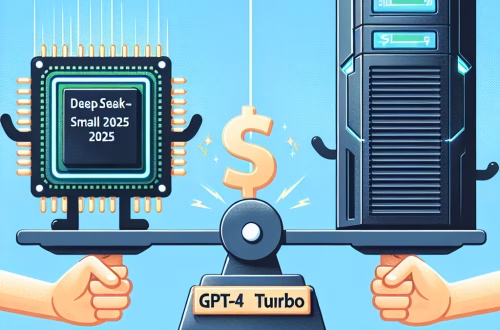create web apps with ChatGPT code generator
Summary:
This article explores how novices can leverage the ChatGPT code generator to build functional web applications without extensive programming expertise. ChatGPT democratizes web development by generating HTML, CSS, JavaScript, and backend snippets through simple conversational prompts. With its natural language interface, beginners can prototype apps faster, understand coding patterns, and focus on solving business problems rather than syntax. While not a replacement for professional developers, it accelerates learning and iteration in the AI era.
What This Means for You:
- Lowered Technical Barriers: You can create basic web apps without mastering programming languages. Describe your idea in plain English (e.g., “Make a weather app with a searchable city list”), and ChatGPT generates usable code blocks to start with.
- Faster Iteration with Actionable Prompts: Use specific phrases like “Generate responsive navbar HTML/CSS” or “Create Python Flask API endpoint for user login” for targeted results. Break complex projects into small prompts for best output accuracy.
- Enhanced Learning Through Code Explanation: Ask ChatGPT to explain generated code line-by-line. Use prompts like “Describe how this React component manages state” to build foundational knowledge while building projects.
- Future Outlook or Warning: While AI accelerates prototyping, generated code may lack security optimization, scalability, or accessibility standards. Always validate outputs with documentation/tools like ESLint. Over-reliance may hinder deeper programming comprehension.
Explained: create web apps with ChatGPT code generator
Understanding ChatGPT’s Role in Web Development
The ChatGPT code generator transforms natural language prompts into functional code snippets for frontend, backend, and database operations. For example:
Prompt: “Create a contact form with HTML validation and CSS gradients”
Output: Returns complete HTML form with required fields, CSS styling, and inline validation logic.
Ideal for rapid proof-of-concepts, MVP prototypes, or learning modern frameworks like React or Vue.js through guided examples.
Best Uses for Novices
1. Static Websites: Generate landing pages, portfolios, or blogs with responsive layouts.
2. API Integrations: Connect to third-party services (e.g., OpenAI API, weather data) using Python/JavaScript.
3. CRUD Applications: Build basic create-read-update-delete apps with Firebase or Flask backends.
4. Debugging Help: Paste error messages to receive troubleshooting steps.
Strengths
Speed: Prototype apps in hours instead of weeks.
Accessibility: No prior syntax knowledge required.
Multi-Language Support: Outputs JavaScript, Python, PHP, and SQL.
Contextual Learning: Ask follow-ups like “Modify this for dark mode.”
Weaknesses & Limitations
Incomplete Logic: May generate placeholders for complex features (e.g., payment gateways).
Outdated Libraries: Knowledge cutoff (e.g., ChatGPT-3.5 lacks 2023 framework updates).
Security Gaps: Often omits input sanitization or authentication checks.
No Full-Stack Architecture: Struggles with end-to-end app design without step-by-step guidance.
Step-by-Step Workflow Example
- Prompt: “Build a todo list app using React and local storage.”
- Refine: “Add due dates to each task with date picker.”
- Debug: “Tasks aren’t saving; fix local storage code.”
- Deploy: Export code and host on Netlify/Vercel.
Pro Tips
- Use explicit constraints: “Use functional components, not class-based.”
- Verify outputs via CodePen or Replit before finalizing.
- Combine ChatGPT with GitHub Copilot for real-time IDE assistance.
Future Trends
Expect tighter integration with no-code platforms (e.g., Webflow exports via ChatGPT plugins) and AI-generated testing suites. However, human oversight remains essential for compliance and UX refinement.
People Also Ask About:
- Can ChatGPT replace developers?
No – it excels at repetitive tasks but lacks strategic problem-solving. Use it to automate boilerplate code (e.g., form validation) while focusing on unique logic. - What web apps can’t ChatGPT build?
High-traffic SaaS platforms, real-time collaborations tools (e.g., Google Docs clones), or apps requiring PCI compliance. Scale and security require human architects. - How accurate is ChatGPT’s generated code?
~70% accuracy for simple components but declines with complexity. Always test thoroughly and cross-reference with official docs like MDN Web Docs. - Is ChatGPT better than no-code tools like Bubble?
No-code offers drag-and-drop simplicity, while ChatGPT provides customizable code. Use both – generate code snippets with AI, then embed into no-code platforms.
Expert Opinion:
AI code generation introduces unprecedented efficiency but requires responsible use. Novices should treat outputs as learning scaffolds rather than production-ready solutions. Prioritize understanding fundamental programming concepts, implement security audits, and maintain human-in-the-loop validation processes. Ethical considerations around IP ownership and bias in training data necessitate caution.
Extra Information:
- OpenAI Code Generation Guide: Official prompt engineering strategies for code tasks.
- GitHub Copilot: AI pair programmer supplementing ChatGPT’s capabilities within IDEs.
- MDN Web Docs: Critical reference for verifying HTML/CSS/JavaScript outputs.
Related Key Terms:
- ChatGPT web app tutorial for beginners
- AI-powered web development for non-coders
- React code generation using ChatGPT prompts
- Limitations of AI-generated web applications
- How to debug ChatGPT code outputs
- Integrating ChatGPT with Firebase backend
- Ethical AI web development practices
Check out our AI Model Comparison Tool here: AI Model Comparison Tool
#create #web #apps #ChatGPT #code #generator
*Featured image provided by Pixabay



